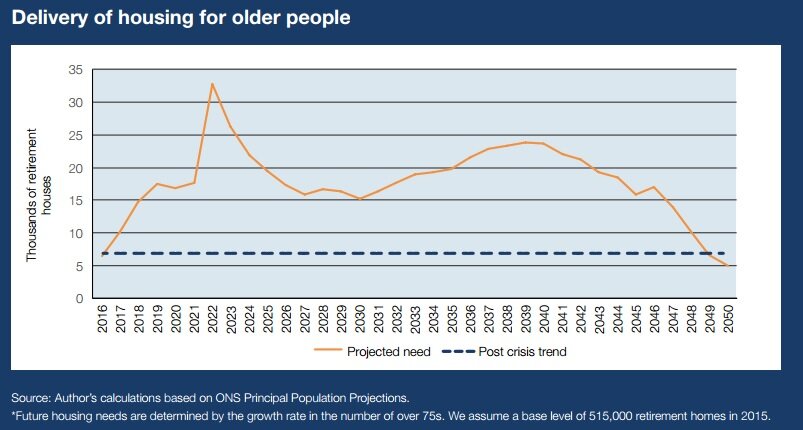
Research finds that although 9 in 10 65-79 year olds live in under occupied houses, there could be a retirement housing gap of 160,000 houses by 2030 if Government fails to focus on last time buyers
Responding to Housing Minister Gavin Barwell’s suggestion that making it easier for older people to downsize could help solve the housing crisis, the International Longevity Centre – UK (ILC-UK) has urged Government to ensure thousands of new retirement properties are built as a matter of urgency.
ILC-UK Chief Executive Baroness Sally Greengross has also called on the Government to introduce a duty on Local Authorities to assess the needs of their older populations when making housing plans, and ensure that these needs are met before plans are put in place.
Research conducted by the ILC-UK has found:
- Nearly 9 in 10 of the 65-79 age group live in under-occupied housing – over 50% live in homes with two or more excess bedrooms.
- There are around 515,000 specialist retirement and extra care homes in England. However, this means that there is only enough specialist housing to accommodate 5% of the over-65 population.
- According to ILC-UK calculations, there could be a retirement housing gap of 160,000 retirement housing by 2030 if current trends continue. By 2050, the gap could grow to 376,000.
The ILC-UK also found that those in retirement housing are significantly more likely to be living in homes with adaptations than those who do not. Approximately 87% of those in retirement housing have home adaptations, by comparison to around 60% in other types of housing.
Therefore, as well as freeing up a range of properties throughout the housing market, downsizing in later life could help to ensure more people can stay in their homes for longer, reducing pressure on the residential care sector.
Surveys conducted by the ILC-UK have also found that there are several reasons why older people do not downsize. One is a supply problem; the lack of suitable housing on the market. Another is financial considerations in terms of moving; stamp duty can be a major barrier.
Baroness Sally Greengross, Chief Executive, ILC-UK said:
The Housing Minister is right to recognise that meeting the needs of last time buyers and encouraging downsizing is crucial to addressing the housing crisis. Downsizing can also ensure that older people live in properties that allow them to stay in their own homes for longer, and can release equity that can be used to fund social care in later live.
However, unless Government acts to encourage local authorities and developers to meet the needs of last time buyers, there could be a retirement housing gap of 160,000 retirement homes by 2030. If current trends continue, the gap could grow to 376,000 homes by 2050.
Local Authorities must have a duty to assess the needs of their older population when making housing plans, and ensure that these needs are met before plans are put in place.
Government should also consider what changes can be made to Stamp Duty to remove the perceived financial barrier of downsizing.
